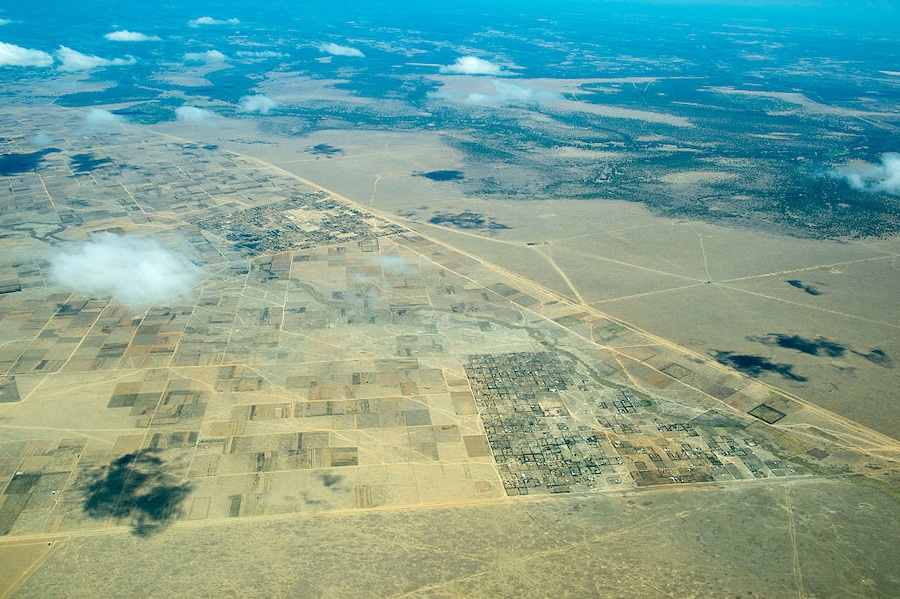This post was originally published on Eco Watch
According to a new report from the United Nations Convention to Combat Desertification (UNCCD), more than three-quarters of the world’s land has become permanently dryer over the course of recent decades.
A combined area half as big as Australia has gone from being humid lands to drylands – an arid area with less rain for nature, pastures, crops and people.
“For the first time, scientists within UNCCD Science-Policy Interface have clearly documented current and future drying trends and impacts that reveal a global, existential peril previously shrouded by a fog of scientific uncertainty. Its name is aridity — the climatic and enduring condition of too little life-supporting moisture — and its effects threaten the lives and livelihoods of billions across almost every region of the globe,” the report said.
Forty percent of all the lands on Earth, excluding Antarctica, are now made up of drylands, reported The Guardian.
These changes over the past three decades are likely to be permanent because, as the report points out, “droughts end, and recovery is possible.”
“Droughts happen when the rain doesn’t fall or falls too little for extended but nevertheless limited periods,” the authors of the report wrote. “Rising aridity is different — it is an unrelenting menace that requires lasting adaptation measures. The drier climates now affecting vast regions across the globe will not return to how they were.”
Currently, one-quarter of the world’s population inhabits expanding drylands. Aridity projections suggest up to five billion people could live in drylands by 2100. All these people are either at risk of desertification or will be in the future. This can leave water scarce and people dehydrated or hungry, with ecosystems totally transformed.
“Human-caused climate change is the culprit; known for making the planet warmer, it is also making more and more land drier. The result is poor soil fertility, crop losses, biodiversity declines, intense sand and dust storms, frequent wildfires and, of course, greater food and water insecurity. Aridity-related water scarcity is causing illness and death and spurring large-scale forced migration around the world,” the report said.
Roughly 12 percent of Africa’s gross domestic product was lost from 1990 to 2015 due to increasing aridity.
“Unlike droughts – temporary periods of low rainfall – aridity represents a permanent, unrelenting transformation,” said Ibrahim Thiaw, UNCCD executive secretary, as The Guardian reported. “Droughts end. When an area’s climate becomes drier, however, the ability to return to previous conditions is lost.”
The drying landscape will affect some crops more than others. For instance, if current trends continue, maize output is predicted to be cut in half in Kenya by mid-century.
Drylands are areas where most of the rainfall — 90 percent — is lost to evaporation. This leaves just 10 percent to support vegetation. By 2050, two-thirds of lands worldwide will store less water, the report said.
The failure of humans to adequately mitigate greenhouse gas emissions has contributed to the global water crisis.
“Rising aridity deepens poverty, forces over-exploitation of fragile resources and accelerates land degradation, creating a vicious cycle of resource scarcity, water insecurity and diminished agricultural potential,” Kate Gannon, a London School of Economics Grantham Institute research fellow, told The Guardian. “These communities, with the least capacity to adapt, face dire consequences to health, nutrition and wellbeing from risks of food shortages, displacement, and forced migration. This is not only a profound injustice, but also a global challenge.”
Those inhabiting drylands across the world have doubled in recent decades from 1.2 billion in 1990 to 2.3 billion in 2020. If carbon emissions are not significantly reduced by the end of the century, that number is projected to double.
“For the first time, a UN scientific body is warning that burning fossil fuels is causing permanent drying across much of the world, with potentially catastrophic impacts affecting access to water that could push people and nature even closer to disastrous tipping points,” said UNCCD chief scientist Barron Orr, as reported by The Guardian.
Mark Maslin, a University College London Earth system science professor, who was not part of the study, said the report was a warning, as well as “a call to politicians that there are solutions.”
“First: we can curb greenhouse gas emissions, which will reduce climate change and global aridification. Second, we can acknowledge the world is drying and take measures to slow it down and to adapt to it,” Maslin said, as The Guardian reported. “We now have so many solutions: sustainable agriculture, water management, reforestation and rewilding to education and awareness building. Ultimately good local and national governance is required to deal with the desertification of our precious life-giving planet.”
The post 40% of Earth’s Land Is Now Drylands, Excluding Antarctica, Research Finds appeared first on EcoWatch.





0 Comments